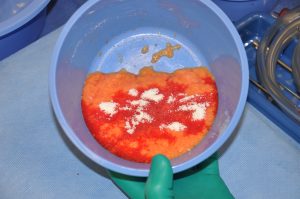The use of fat has long been thought of by plastic surgeons as an ideal injection material for facial augmentation and rejuvenation. With no chance of rejection and more than an adequate amount of usable graft available from almost every patient, its appeal continues to grow. It s biggest drawback, however, is that it is unpredictable with uncertainty about its long-term permanence.
Because the injected fat must quickly acquire a new blood supply to survive, the use of large amounts of injected fat during a single session are particularly prone to postoperative resorption. Hence, the concept of a technique known as Structural Fat Grafting or microfat grafting. With this well known process, small amounts of fat through many small injection tracks to gradually build up the desired volume. Because each injection deposits only a small amount, it is easier for new blood vessels to grow into it more thoroughly resulting in more fat that persists.

The emergence of many non-surgical options for facial rejuvenation, such as Botox and injectable fillers, makes for good improvement and they can easily done. But these results are not permanent and must be repeated. Enter the concept of more predictable fat grafting. Some have called the integration of stem cells and fat grafting a Stem Cell-Enhanced Facelift. By removing fat from the patient’s body, processing it in a special way, and then injecting it back into the same person’s face, some surgeons claim that the results are both natural looking but skin quality and tone is improved. The supposition is that the growth factors contained in the implanted cells stimulate some degree of skin renewal.
While the concept of a knife-free facelift done under local anesthesia with a short downtime and long lasting results is still largely a dream for most, certain facial rejuvenation patients may benefit. Loss of facial volume and certain wrinkles on an aging face may use stem cell enhanced fat injections. (lips, nasolabial fold, lateral facial volume loss) During a traditional facelift, fat injections can build up other needed facial areas which are not addressed by the removal of skin laxity.
Barry L. Eppley, M.D., D.M.D.
Indianapolis, Indiana


